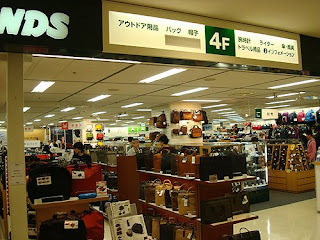Ena Gorge
In the Ena Valley in Gifu Prefecture, about an hour north of Nagoya, there is much to see and do. Historically important due to its position on the Nakasendo inland highway between Kyoto and Edo (Tokyo), visitors can now take a ride on the historic Akechi Railroad to the Taisho Village in Akechi, see the former castle town of Iwamura or take a hot soak in the quaint onsen in Hanashiro, a stone's throw from the tiny station.

A short Tono Tetsudo bus or taxi ride north from JR Ena Station is also the stunning scenery of Ena Gorge. The gorge came into being with the damming of the fast flowing Kiso River in the Taisho Period (1912-1926). The dam was constructed by Momosuke Fukuzawa, the adopted son of Yukichi Fukuzawa, the founder of Keio University, an important figure in Japan's modernization and westernization post-1868 and the man on the current 10,000 yen banknote. Momosuke himself was another colorful character who became known as the "king of electric power" for his work in building hydro-electric generating dams. The Oi Dam and electric power plant at Ena Gorge is, in fact, Japan's first power station to utilize a dam.
Momosuke, born poor as Momosuke Iwasaki in Saitama Prefecture, was an exceptional talent, and married into the powerful and influential Fukuzawa family as a business arrangement that suited both parties. However, throughout his life, Momosuke was the lover of Sadayakko Kawakami, an ex-geisha who became known as "Japan's first actress" and wowed the west with her performances in Paris and America. In later life, the glamorous pair lived together in Nagoya and Tokyo and formed a successful partnership in business. Sadayakko in silk and Momosuke in electric power. An interesting book on the life of Sadayakko Kawakami and her lover is Lesley Downer's Madame Sadayakko: The Geisha Who Bewitched the West.
To enjoy the beautiful vistas of Ena Gorge, known for its cherry blossoms in spring and maple leaves in the fall, take the 20km, 30-minute Ena Gorge cruise (Tel: 0573 25 4800; 1250 yen; sailings 9am-5pm in season).
There is also a circular hiking trail that crosses the Oi Dam and returns via the Enakyo Ohashi Bridge. Near the lake shore are numerous souvenir shops and restaurants, some of them serving fresh fish caught from the lake. For the less energetic, stroll out to Sazanami Park on Benten Island for some delightful views. The Enakyo Wonderland Amusement Park (Tel: 0573 45 3333) and its Big Wheel are clearly visible from the boat jetty.
The area has two nearby hotels: Enakyo International Hotel and Enakyo Grand Hotel as well as a campsite (and croquet ground!) in Enakyo Garden (Tel: 0573 26 2088).
The quickest way to reach Ena is by JR Central Liner train from Nagoya Station.
If you are driving from Nagoya take route 363 from Seto or route 11 from Toyota. Ena city is very near Ena Interchange on the Chuo Expressway, which follows the old Nakasendo post road to Magome and Tsumago at this point.
Yahoo Japan Auction Service
Book a hotel in Japan with Bookings
Tokyo Serviced Apartments
Japan Friends
Happi Coats
Japanese For Busy People
Tags
Hanashiro Onsen Gifu Nagoya Ena









.jpg)











